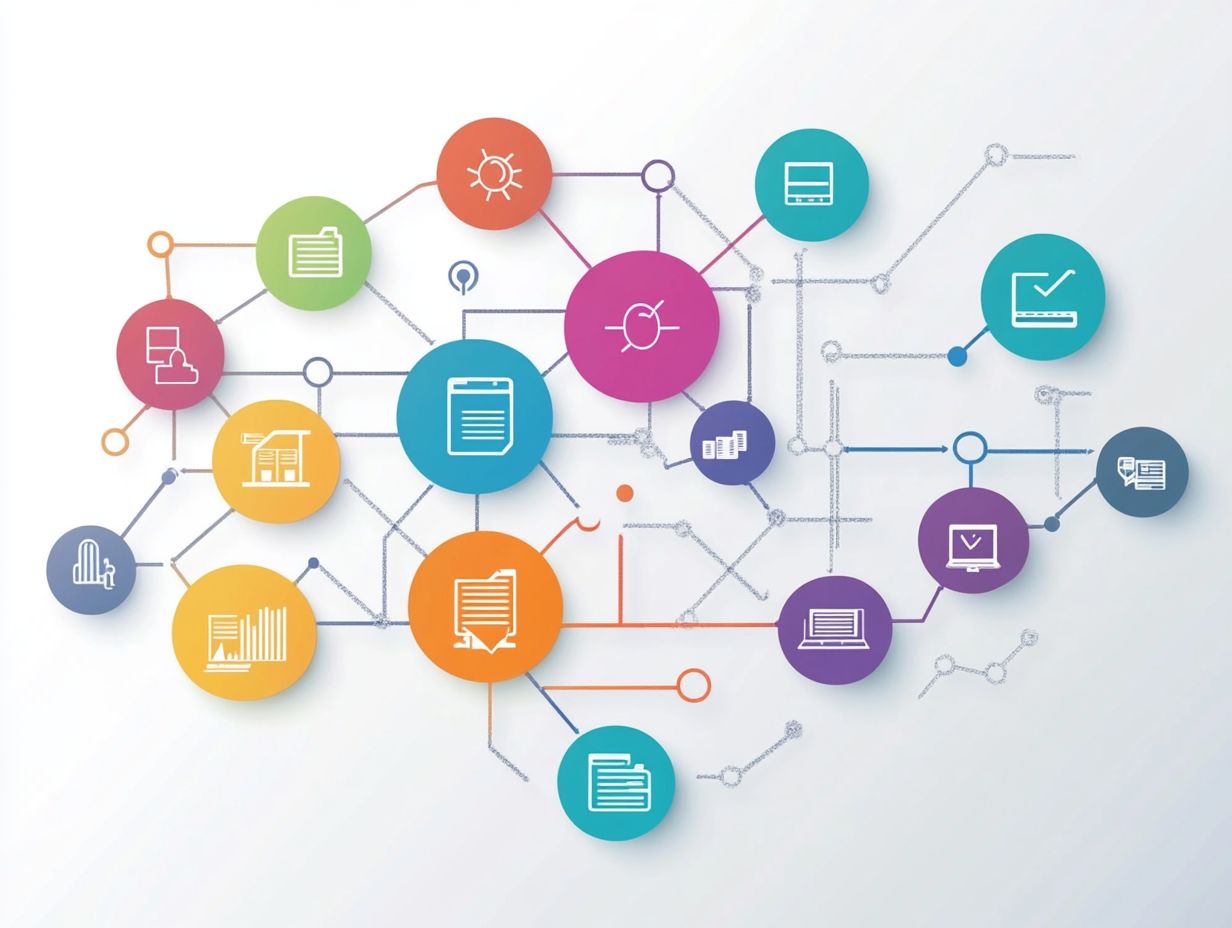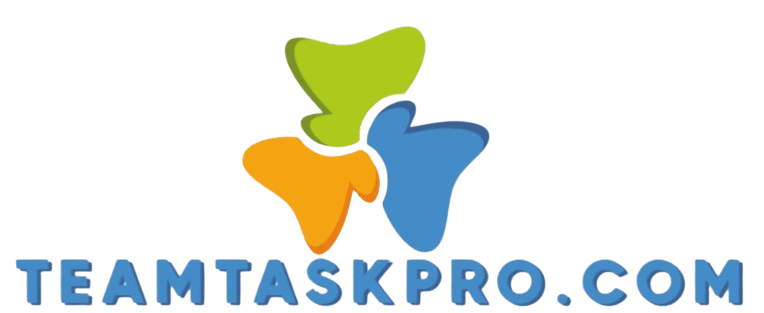common project management terms explained
Project management is crucial for expertly steering projects from their initial conception to final completion.
Navigating the vast array of terms and definitions can feel overwhelming, even for those with considerable experience. This guide simplifies key concepts like project scope, deliverables, and the people involved in the project, while also clarifying common misconceptions that often lead to confusion.
With practical tips for effective communication and implementation, we aim to empower you with the knowledge necessary to master project management terminology and elevate your project outcomes.
Contents
Key Takeaways:

Project management coordinates resources and tasks to achieve specific goals within timelines and budgets. Clear definitions of terms like project scope and deliverables are essential for success. Make sure to clarify any confusing terms and follow best practices for communication and risk management.
What is Project Management?
Project management helps in planning and executing projects to meet defined goals, timelines, and budgets. It includes methodologies like Agile, Scrum, and PRINCE2, each crafted to cater to unique project requirements and stakeholder needs.
The ultimate goal is to achieve project success through structured processes, effective communication, and active stakeholder involvement. This guides projects seamlessly from initiation to closure.
In today s fast-paced business landscape, project management’s significance is undeniable, impacting various sectors such as construction, IT, healthcare, and marketing. Successful project execution can be a catalyst for innovation and growth.
As a project manager, you take on a pivotal role as both a leader and a coordinator, ensuring that your teams collaborate effectively and that resources are allocated judiciously.
By embracing methodologies like Agile and Scrum, you enable your teams to adapt to evolving requirements with agility. This flexibility cultivates a culture of continuous improvement, making regular communication and engagement with stakeholders essential.
Involving them throughout the project not only mitigates risks but also boosts buy-in and satisfaction, ultimately paving the way for more successful outcomes.
Key Terms and Definitions
Grasping key project management terms can transform your projects! These terms create a common language for everyone involved, ensuring clarity and alignment among stakeholders. Concepts like project scope, project deliverables, business case, communication log, and project charter are fundamental to a robust project management strategy.
They guide you and your team through the various phases of a project, paving the way for success.
Project Scope
Project scope defines what s included and excluded in a project. This clarity helps set expectations among all involved.
It covers deliverables, acceptance criteria, and the overall objectives to achieve during the planning phase.
To determine the project scope effectively, engage various stakeholders to gather their insights and requirements. This documentation will serve as your roadmap, detailing the tasks to be completed while incorporating specific acceptance criteria clear standards that must be met for stakeholders to consider the deliverables satisfactory.
For instance, in software development, when creating a new application, acceptance criteria might specify functionality tests to ensure the app operates seamlessly across different devices. By defining the project scope and criteria from the get-go, you can minimize the risk of scope creep when unplanned features or changes get added, ultimately derailing timelines and budgets.
A classic example is in the construction industry, where a well-defined project scope including detailed blueprints and materials prevents unexpected changes that could significantly inflate costs and extend project durations.
Project Deliverables
Project deliverables are the concrete or abstract results that you produce as a result of executing your project. They play a crucial role in influencing both project performance and stakeholder satisfaction.
It s essential that these deliverables align seamlessly with the project scope and acceptance criteria. This alignment maintains positive stakeholder involvement throughout the project lifecycle.
Identifying your project deliverables requires careful planning and working together with your team and stakeholders. These outcomes must address the specific needs and expectations established at the beginning of the project.
Effectively managing these deliverables involves continuous monitoring and adaptation on your part. Ensure that any changes in scope or stakeholder requirements are swiftly integrated.
For instance, tangible deliverables might include completed designs or physical products. Intangible deliverables could encompass knowledge transfer or enhanced customer relationships.
Stakeholder involvement is critical in the approval process for these deliverables. Their feedback and insights are invaluable in confirming that the project remains on track and aligned with desired goals, ultimately influencing your project’s success.
Project Stakeholders

Project stakeholders are the individuals or groups with a vested interest in your project, shaping its direction and outcomes. Their involvement is crucial because they offer valuable insights and feedback that can significantly influence the success of the strategies and initiatives your project management office develops.
Among these stakeholders, clients, team members, suppliers, and regulatory bodies each have distinct roles. Clients typically define your project’s scope and objectives, while your team members execute the necessary tasks to bring those objectives to fruition.
Suppliers provide the essential resources and expertise that keep your project on track. Regulatory bodies ensure compliance with laws and standards, adding an extra layer of accountability.
Engaging stakeholders throughout the project lifecycle is vital. Regular communication helps you identify potential challenges early on.
For example, incorporating client feedback during development can enhance product features and ultimately boost satisfaction. Effective practices such as stakeholder workshops or consistent status updates foster collaboration, leading to improved project outcomes.
Project Timeline
A project timeline serves as a visual guide for your project schedule, clearly outlining key milestones, tasks, and deadlines throughout the various phases.
Using techniques like the Critical Path Method improves your milestone tracking and ensures that execution aligns with your project goals. This planning tool not only organizes your tasks but also provides a clear roadmap for everyone involved.
Incorporating Gantt charts allows you to display the various stages of your project along a horizontal time axis, simplifying the visualization of progress and dependencies.
For example, in a graphic design project with phases like brainstorming, drafting, and client reviews, a timeline keeps these interconnected tasks on track. Recognizing critical deadlines and dependencies through milestone tracking ensures that you allocate resources efficiently, effectively preventing potential bottlenecks.
Mastering timeline management is key to keeping your project on track. It fosters a team spirit and ensures timely decisions for a smooth project completion!
Project Budget
The project budget is your detailed financial blueprint, outlining expected costs and resource allocation necessary to achieve your project objectives. This meticulous planning is essential for preventing cost overruns.
By conducting a cost-benefit analysis, you can justify expenditures and allocate resources efficiently throughout the project s lifecycle. A well-structured budget serves as your reference point for tracking financial performance, enabling you to make informed decisions at various stages of the project.
Effective budget planning requires you to carefully consider both fixed and variable costs while also accounting for potential risks that could arise. For instance, setting aside a portion of the budget for contingencies can help mitigate the impact of unexpected expenses.
Implementing strategies like regular budget reviews and performance tracking enhances transparency and allows for proactive adjustments in resource allocation. This approach helps you maintain financial control, ultimately guiding the successful execution of your project.
Project Risk Management
Project risk management involves identifying, assessing, and mitigating potential risks throughout the project lifecycle. It s crucial to have contingency plans in place to tackle unforeseen challenges.
Accurate project estimation, combined with proactive risk management strategies, is essential for maintaining project success and minimizing disruptions. This systematic approach protects project objectives and cultivates a resilient team ready to navigate uncertainties.
Employing risk assessment techniques, such as qualitative and quantitative analysis two ways to look at risks, one focusing on descriptions and opinions, and the other on numbers and data enhances your ability to anticipate challenges and develop effective responses.
For example, utilizing a detailed risk matrix helps prioritize risks based on their likelihood and potential impact, guiding resource allocation wisely.
Establishing contingency plans, like an alternative supplier strategy, can significantly mitigate project delays and budget overruns. Adopting effective risk management practices, such as regular risk reviews and engaging stakeholders, elevates project outcomes, ensuring timely delivery and alignment with client expectations.
Project Communication Plan
A project communication plan serves as your blueprint for sharing information among stakeholders. It ensures everyone remains informed and engaged throughout the project.
Leverage collaboration tools and maintain a communication log to enhance project performance and foster transparency. This plan includes identifying your target audience, which enables tailored messaging.
Outlining preferred communication methods whether emails, team meetings, or project management software keeps all stakeholders aligned and informed. Set a regular update schedule to keep everyone engaged and informed!
Collaboration tools like Slack or Microsoft Teams support real-time communication, streamline discussions, and promote teamwork. Incorporating practices like clearly defined roles and regular check-ins strengthens relationships and keeps everyone on track.
Project Quality Management

Project quality management involves processes and activities ensuring your deliverables meet established standards and satisfy stakeholder expectations.
Using project metrics and Key Performance Indicators (KPIs), which are metrics used to measure success, allows for effective progress assessment and thorough project evaluations.
Implementing a structured approach to project quality management lays a solid foundation for success and aligns with overarching business objectives.
Identify specific metrics that reflect the quality of your project and instill a sense of accountability among your team members. Regularly revisiting these metrics helps you swiftly address any deviations, leading to continuous enhancements.
Conduct regular evaluations through methods like audits and feedback loops. This cyclical nature of quality management fosters a culture of continuous enhancement. Embrace quality management to drive your project’s success!
Common Misconceptions about Project Management Terms
Common misconceptions surrounding project management terminology can create confusion and misalignment among project teams and stakeholders.
It s essential to grasp the true meanings of terms like Agile, Earned Value Management, and various project methodologies. Doing so enhances communication and significantly contributes to your project’s success.
Clarifying Confusing Terms
Clarifying confusing project management terms can greatly enhance your project communication and execution. This is especially important when diving into ways of working like Agile and concepts like change management.
Understanding these terms enables you and your stakeholders to align expectations. This alignment fosters effective contributions toward achieving project goals.
For example, many people might see Agile simply as a way of working, but it actually represents a broader set of principles focused on adaptability and rapid responses to feedback.
Similarly, the term “change management” is often misunderstood. It s not just about rolling out new processes; it also involves preparing teams for changes and ensuring that disruptions are kept to a minimum.
Misunderstandings can lead to project delays and misaligned goals. This highlights the necessity of defining key terms like “sprint,” which denotes time-boxed efforts in Agile, and “stakeholder management,” the process of actively engaging all parties involved to foster maximum collaboration and support.
Tips for Using Project Management Terms Effectively
Use clear project management terms to improve communication among your project teams and stakeholders. This ensures that everyone is aligned on objectives, expectations, and project guidelines.
By implementing best practices, you can foster collaboration and significantly enhance project success.
Best Practices for Communication and Implementation
Implementing best practices for communication is essential for successfully executing your project management strategies. This ensures that every team member remains informed and engaged throughout the process.
Utilizing collaboration tools can significantly enhance communication and facilitate smoother project implementation. Embracing this approach creates a transparent and thriving team environment!
For example, platforms like Slack and Microsoft Teams enable real-time messaging and file sharing. This makes it easier for your team to stay in sync.
Regular check-ins via video conferencing software such as Zoom or Google Meet promote open dialogue and allow you to address concerns promptly.
Project management tools like Trello and Asana further amplify coordination. They enable your team to track progress, assign tasks, and set deadlines, ensuring that everyone is aligned and actively contributing to the project’s overall success.
Frequently Asked Questions

Understanding these key terms is vital for anyone new to project management:
What is a project?
A project is a defined and temporary endeavor with a specific goal, timeline, and budget, undertaken to create a unique product, service, or result.
What is project management?
Project management is the application of knowledge, skills, tools, and techniques to plan, execute, monitor, and control a project to achieve its objectives within defined constraints.
What is a project manager?
A project manager is the person responsible for leading a project and ensuring it is completed within the defined scope, timeline, and budget. They oversee the project team, manage stakeholders, and make decisions to keep the project on track.
What is a project scope?
Project scope refers to the specific goals, deliverables, tasks, and boundaries of a project. It outlines what will be included and excluded from the project, helping to define the project’s objectives and constraints.
What is a project timeline?
A project timeline, also known as a project schedule, is a visual representation of the sequence and timeline of project tasks and milestones. It helps ensure that tasks are completed in a logical order and within the defined project timeline.
What is a project budget?
A project budget is a detailed estimate of the costs associated with executing a project. It includes all necessary resources, such as labor, materials, and equipment, and helps track and control project expenditures.






